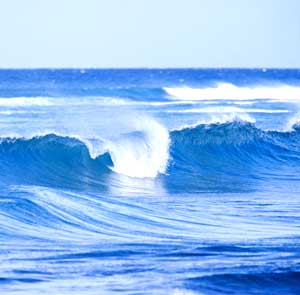Where did all that extra water come from? Mainly from melting ice sheets on Greenland and Antarctica, and many scientists, including University of Wisconsin Anders Carlson, have expected that Greenland was the main culprit.
'The Greenland Ice Sheet is melting faster and faster, says Carlson, who is also a member of the Center for Climatic Research in the Nelson Institute for Environmental Studies. But despite clear observations of that fact, estimates of just how much the ice will melt and contribute to sea level rise by the end of this century are highly varied, ranging from a few centimeters to meters.
The researchers analyzed silt from an ocean-floor core taken from a region off the southern tip of Greenland that receives sediments carried by meltwater streams off the ice sheet. They used different patterns of radiogenic isotopes to identify sources of the sediment, tracing the silt back to one of three “terranes” or regions, each with a distinct geochemical signature. The patterns of sedimentation show which terranes were still glaciated at that time.
The implication of our results is that West Antarctica likely was much smaller than it is today,” and responsible for much more of the sea level rise than many scientists have thought, he says. “If West Antarctica collapsed, that means it’s more unstable than we expected, which is quite scary.
Ultimately, Carlson says he hopes this line of research will improve the representation of ice sheet responses to a warming planet in future Intergovernmental Panel on Climate Change (IPCC) reports. Temperatures during the last interglacial period were similar to those expected by the end of this century, and present-day temps have already reached a point that Greenland’s glaciers are melting.

















Related Items
Climate scientists are ignoring fast-growing cities in Africa and Asia
Reducing psychological distance can help kids cope with climate anxiety
Lower greenhouse gas emissions not necessarily due to climate policy